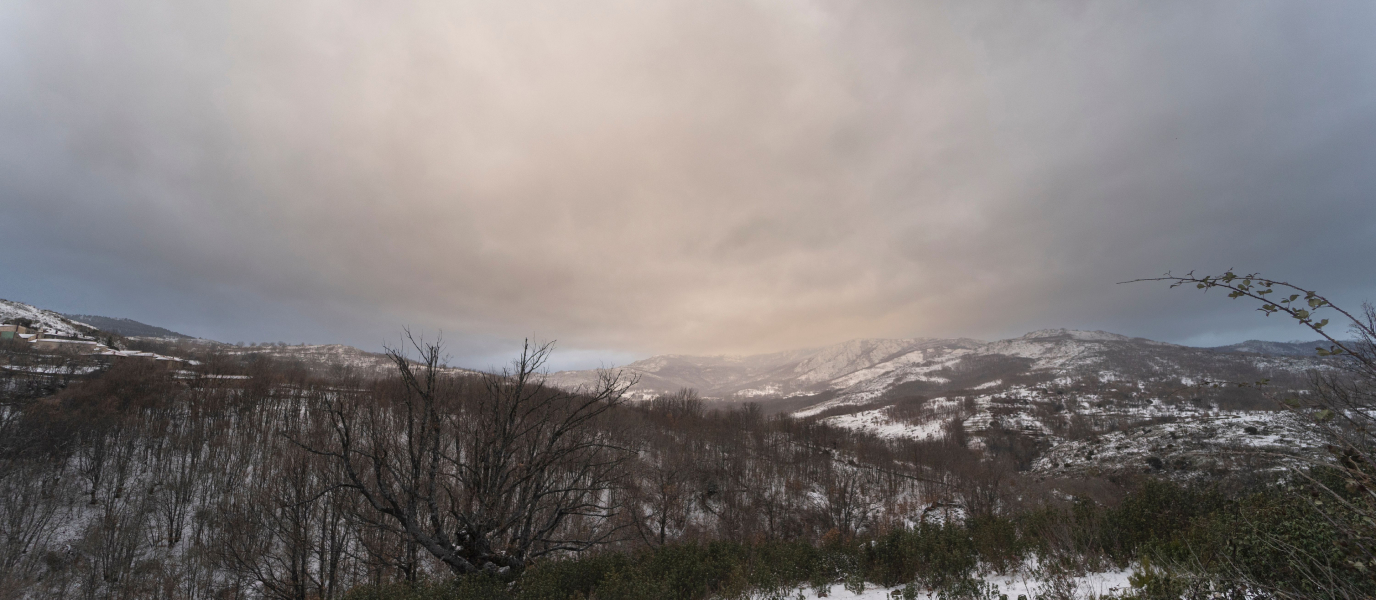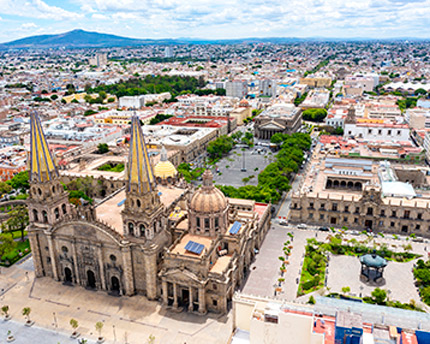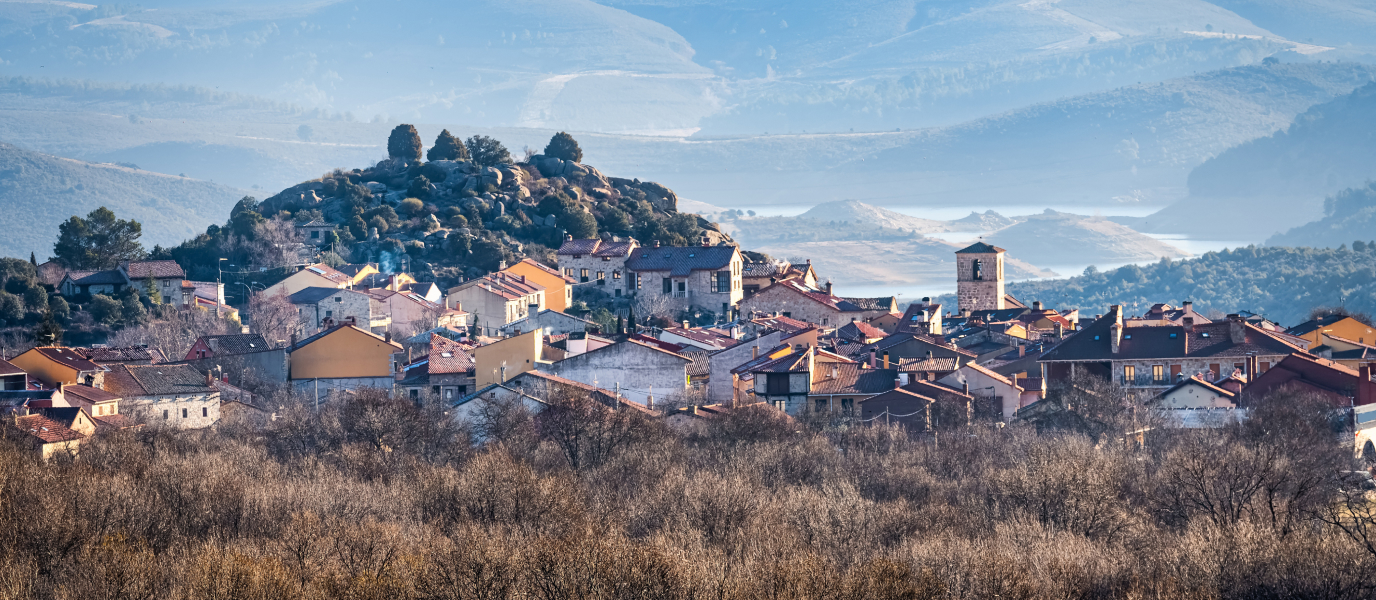La Hiruela sits at the northern border of the Madrid Autonomous Region, 105 kilometres [65 miles] from the capital and practically in Guadalajara. This tiny twelfth-century village tucked away in a valley at an altitude of 1,200 metres feels as though it transports you back in time. Thanks to its remote location, deep in a rugged landscape of mountains, pastures, valleys and rivers, La Hiruela (current population: 55) has remained impervious to the passing centuries. Its stone, adobe and oak-beam houses maintain their original medieval structure. The few remaining inhabitants continue to look after their cows and orchards while nature runs wild and the streets are populated by cats. The nearby land is still dotted with mills, charcoal kilns and other traditional buildings. This is also true of the Sierra del Rincón mountains, the area where La Hiruela is located; it was classified as a Biosphere Reserve in 2005 because its ecosystem remains unchanged by time. So when you feel as though you need to be “far from the madding crowd”, La Hiruela is the place that springs to mind. Want to find out more?
Discovering La Hiruela: back to the past
As you drive towards La Hiruela along the narrow, winding road, you’ll feel as though the further you travel, the further back in time you’re headed. Suddenly the air becomes fresher and nature makes its presence felt as you’re welcomed by a heady scent of lime blossom. Leave your car at the entrance to the village (this is compulsory at weekends) and take a stroll along its peaceful streets where, if you’re lucky, you’ll run into a local who’ll give you a warm greeting (although you’re more likely to encounter the village cats). You’ll soon reach the end of the village where you’ll find the seventeenth-century Baroque church of San Miguel Arcángel and the Museum of Ethnology. The museum is housed in the old covered fronton court and makes a good starting point for finding out about the ancient way of life of the villagers.
Once on the outskirts of the village, you can follow the ruta oficial Los Oficios de la Vida [Trades of Life official route], an ethnological journey through the traditional way of life of La Hiruela and a chance to see first-hand everything that you discovered in the museum. The first stop is the Molino de la Hiruela flour mill, a building that has been recently restored and is first described in records dating back to the eighteenth century. It sits on the banks of the young Jarama river, which has cold, crystal-clear water near its source. The mill was generally for common use by the people of La Hiruela and continued to be used until the first bakery opened in the village in 1975.
Another refurbished area is the old Colmenar [apiary] in the Prado Viejo [Old Meadow] where one of the main sources of income in La Hiruela was produced: honey. There are several lines of corchos [corks]—the name given to hives built inside empty trunks—and together they create a picturesque landscape that is over 200 years old, according to the villagers. Not far from here is another cornerstone of La Hiruela’s traditional economy up until the middle of the twentieth century: the Carbonera or charcoal kiln. This primitive wooden structure was used to produce oak charcoal, a fuel that was essential for homes before the widespread use of diesel and electricity. Locals would make the charcoal here and then sell it to neighbouring villages.
To recharge your batteries after your walk, there’s nothing better than stopping for a snack at the Bar-Social La Hiruela, a bar that was opened in the old schoolhouse that closed due to a lack of children. And if you’re after something more substantial, both Casa Aldaba and La Hiruela—the two village restaurants—have excellent dishes that are typical to the area, especially stews, with ingredients including local beef, game, mushrooms and cherries. If you’d like to spend the night in the village there are several rural accommodation options, however, these do need to be booked in advance. And don’t forget to bring a jumper or cardigan even if you visit in summer: the nights are cool.
Other historic routes in the area
If you’d like to follow a gentle trail through the surrounding area, La Hiruela has three official routes that are linked to traditional rural life in the region. The Las Eras y Pilar de Riego route takes about two hours and follows paths that were once used to transport grain. There are several viewpoints where you can enjoy views of the village and its environs. The De Molino a Molino route is of similar length and takes you past old mills on the banks of the Jarama river as you walk among poplars and willows.
Finally, the Senda de la Fuente Lugar is a slightly shorter route which takes you through a ‘natural tunnel’ of birches and fruit trees such as cherry, hazelnut, apple, pear, brambles, etc. The greenness and dense population of these tree species, plus others such as Pyrenean oak, make the pastures at La Hiruela a natural wonder more typical to the ecosystems in northern Spain.
Discover the Hayedo de Montejo
Amid the beautiful natural landscapes hiding in the Sierra del Rincón mountains—an area that is comprised of La Hiruela, Horcajuelo de la Sierra, Prádena del Rincón, Puebla de la Sierra and Montejo de la Sierra—the most special attraction of all is probably Hayedo de Montejo. Just 20 minutes by car from La Hiruela, Hayedo de Montejo is one of the most southern beech woods in Europe. It’s spectacular in autumn when its leaves turn a thousand shades of yellow and red, dramatically contrasting with the surrounding plant life. The damp and shady zone where the wood has thrived has a unique microclimate that makes it possible for this tree species, typical to more northern regions, to flourish at this latitude and the wood is home to trees that are over 250 years old.







































































